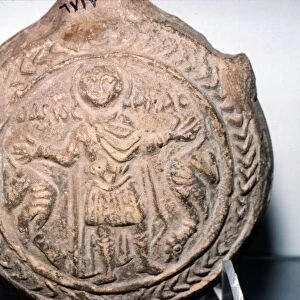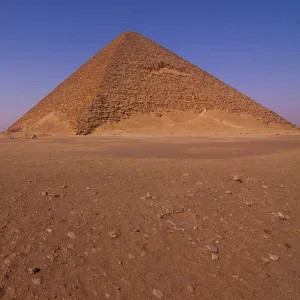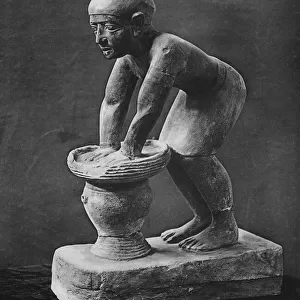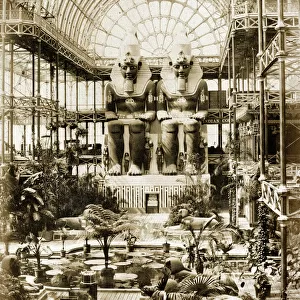Egypt Heritage Sites Collection
Egypt is home to some of the world's most iconic and ancient heritage sites
Choose a picture from our Egypt Heritage Sites Collection for your Wall Art and Photo Gifts
5 items
All Professionally Made to Order for Quick Shipping
-
Egypt Heritage Sites Collection
Egypt is home to some of the world's most iconic and ancient heritage sites. The Pyramids of Giza, the Sphinx, and the Valley of Kings are just a few these incredible monuments. Egypt also boasts many other important archaeological sites such as Abu Simbel, Luxor Temple, Karnak Temple Complex, and Saqqara Necropolis. These sites are not only important for their historical significance but also for their beauty and grandeur. They provide an insight into the rich culture and history of this ancient civilization. In addition to these monuments, Egypt is home to many other cultural attractions such as museums, galleries, mosques and churches that offer visitors a unique glimpse into its past. With so much to see in Egypt it is no wonder why it has become one of Africa's top tourist destinations.
+
Our beautiful pictures are available as Framed Prints, Photos, Wall Art and Photo Gifts
The Egypt Heritage Sites collection from Media Storehouse offers a stunning array of wall art and framed prints that showcase the rich cultural heritage of Egypt. Our collection features breathtaking images of some of the most iconic landmarks in Egypt, including the Pyramids of Giza, Abu Simbel temples, Karnak temple complex, and Luxor Temple. Each piece is expertly crafted to capture the beauty and majesty of these ancient sites. The vivid colors and intricate details bring these historic landmarks to life in a way that will transport you back in time. Whether you are an art collector or simply looking for a beautiful addition to your home decor, our collection has something for everyone. From large canvas prints to smaller framed pieces, there is no shortage of options when it comes to displaying these incredible works of art. If you are looking for high-quality artwork that celebrates the rich history and culture of Egypt, look no further than our Egypt Heritage Sites collection.
+
What are Egypt Heritage Sites (Egypt Africa) art prints?
Egypt Heritage Sites art prints are high-quality reproductions of iconic landmarks and historical sites found throughout Egypt. These prints showcase the rich cultural heritage of Egypt, from ancient pyramids to modern-day cities. Each print captures the intricate details and vibrant colors that make these sites so unique. These art prints are perfect for anyone who loves history, architecture, or travel. They can be used to decorate homes, offices, or public spaces such as museums and galleries. The range of available images includes famous landmarks like the Sphinx and the Great Pyramid of Giza, as well as lesser-known but equally stunning locations like Abu Simbel and Luxor Temple. Whether you're a seasoned traveler or simply an admirer of world culture, Egypt Heritage Sites art prints offer a beautiful way to bring a piece of this fascinating country into your life.
+
What Egypt Heritage Sites (Egypt Africa) art prints can I buy from Media Storehouse?
We offer a wide range of Egypt Heritage Sites art prints that you can purchase. These prints showcase the rich cultural heritage and history of Egypt, including iconic landmarks such as the Great Sphinx, Pyramids of Giza, Abu Simbel temples, Karnak temple complex, Luxor temple and Valley of Kings. The collection also features stunning images of ancient Egyptian hieroglyphics and artifacts. The art prints are available in various sizes and formats to suit your preferences. You can choose from high-quality paper prints or canvas wraps that will add an elegant touch to any room in your home or office. Whether you're looking for a unique gift for someone special or want to decorate your own space with beautiful artwork inspired by one of the world's most fascinating civilizations, we have something for everyone. With their vast selection of Egypt Heritage Sites art prints, you'll be sure to find something that captures your imagination and brings a piece of history into your life.
+
How do I buy Egypt Heritage Sites (Egypt Africa) art prints?
To purchase Egypt Heritage Sites art prints from Media Storehouse, you can browse our extensive collection of images featuring the stunning heritage sites of Egypt. Once you have found a print that catches your eye, simply select the size and format that best suits your needs. We offer a range of options for printing these beautiful images, including canvas prints, framed prints, and photographic prints. You can also choose to customize your order with various framing options or by adding matting to enhance the presentation of your artwork. Once you have made your selection and completed the checkout process, Media Storehouse will handle all aspects of production and shipping to ensure that your art print arrives in perfect condition. Whether you are looking for a unique piece to add to your home decor or an inspiring gift for someone special, purchasing an Egypt Heritage Sites art print from Media Storehouse is sure to impress.
+
How much do Egypt Heritage Sites (Egypt Africa) art prints cost?
We offer a wide range of Egypt Heritage Sites art prints that showcase the rich history and culture of Egypt. Our collection includes stunning photographs and illustrations that capture the beauty and grandeur of iconic landmarks such as the Pyramids of Giza, Luxor Temple, Karnak Temple Complex, Abu Simbel Temples, and many more. The cost of our Egypt Heritage Sites art prints varies depending on factors such as print size, paper type, framing options, and other customizations. However, we strive to provide affordable pricing for all our customers without compromising on quality. Our high-quality art prints are perfect for home or office decor or as unique gifts for friends and family who appreciate Egyptian history and culture. With our extensive collection of Egypt Heritage Sites art prints available in various sizes and formats to suit your preferences, you're sure to find something that fits your taste at an affordable price point.
+
How will my Egypt Heritage Sites (Egypt Africa) art prints be delivered to me?
We take great care in ensuring that your Egypt Heritage Sites art prints are delivered to you in the best possible condition. We use high-quality packaging materials and reliable delivery services to ensure that your order arrives safely and on time. Once you have placed your order with us, our team of experts will carefully print and prepare your chosen artwork for dispatch. Your prints will then be securely packaged using protective materials such as cardboard tubes or flat-pack envelopes, depending on the size and type of print. We work with trusted courier companies to deliver your order directly to your doorstep. You can track the progress of your delivery online using a unique tracking number provided by our couriers. We pride ourselves on providing a fast, efficient, and reliable service to all our customers. So sit back, relax, and let us take care of delivering your beautiful Egypt Heritage Sites art prints straight to you.





